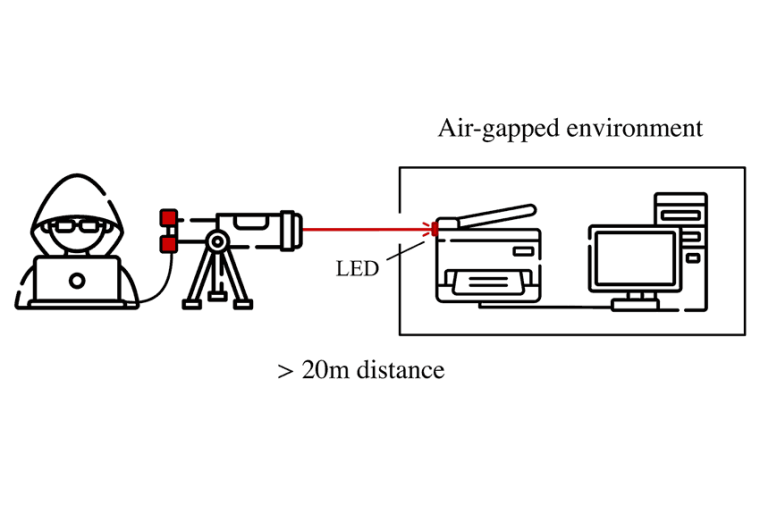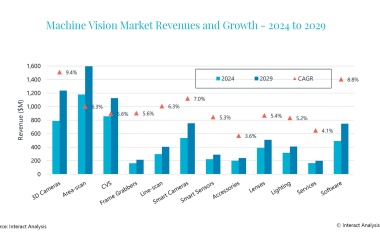Computer attacks with laser light
IT systems that are physically isolated from the outside world (air-gapped) can still be attacked. This has been demonstrated by computer security experts in the LaserShark project.
The researchers showed that data can be transmitted to LEDs of regular office devices using a directed laser. With this, attackers can secretly communicate with air-gapped computer systems over distances of several meters. So in addition to conventional information and communication technology security, critical IT systems need to be protected optically as well.


Early December 2021, researchers of KIT, TU Braunschweig, and TU Berlin presented the LaserShark attack at the 37th Annual Computer Security Applications Conference (ACSAC). This research project focuses on hidden communication via optical channels. Computers or networks in critical infrastructures are often physically isolated to prevent external access. “Air-gapping” means that these systems have neither wired nor wireless connections to the outside world. Previous attempts to bypass such protection via electromagnetic, acoustic, or optical channels merely work at short distances or low data rates. Moreover, they frequently allow for data exfiltration only, that is, receiving data.
The Intelligent System Security Group of KASTEL – Institute of Information Security and Dependability of KIT, in cooperation with researchers from TU Braunschweig and TU Berlin, have demonstrated a new attack: With a directed laser beam, an adversary can introduce data into air-gapped systems and retrieve data without additional hardware on-side at the attacked device. “This hidden optical communication uses light-emitting diodes already build into office devices, for instance, to display status messages on printers or telephones,” explains group head Prof Christian Wressnegger. LEDs can receive light, although they are not designed to do so.
By directing laser light to already installed LEDs and recording their response, the researchers establish a hidden communication channel over a distance of up to 25 meters that can be used bidirectionally. It reaches data rates of 18.2 kilobits per second inwards and 100 kilobits per second outwards. This optical attack is possible in commercially available office devices used at companies, universities, and authorities. “The LaserShark project demonstrates how important it is to additionally protect critical IT systems optically next to conventional information and communication technology security measures,” Christian Wressnegger says.
To foster future research on covert communication channels and bridging the air gap, the IT security researchers publish the program code used in their experiments as well as the raw data of their measurements on the LaserShark project website intellisec.de/research/lasershark.
Reference: N. Kühnapfel et al.: LaserShark: Establishing Fast, Bidirectional Communication into Air-Gapped Systems, Proc. 37th Annual Computer Security Applications Conference (ACSAC), 2021; DOI: 10.1145/3485832.348591, [preprint at intellisec.de]
Company
Karlsruher Institut für Technologie (KIT)Kaiserstraße 12
76131 Karlsruhe
Germany
most read

The winners of the inspect award 2025
This time, with two additional categories, “SMEs” and “Artificial Intelligence,” the selection was even larger than usual. But now they have been chosen: the machine vision products of the year 2025.

RS expands automation portfolio through partnership with Leuze
Leuze, known for intelligent sensor solutions, is now offering a selection of almost 200 products via RS.

New member of the board of VDMA Robotics + Automation
Dr. Michael Jürgens, CEO of Kuka Robotics, has been appointed to the board of the VDMA trade association.

Growth in machine vision thanks to AI software
The global machine vision market recorded revenues of $5.6 billion in 2024, representing a decline of 3.9% compared to 2023.

Process automation: slight growth in incoming orders in 2025
Incoming orders for measurement technology and process automation grew in the low single-digit percentage range worldwide between January and September 2025.






